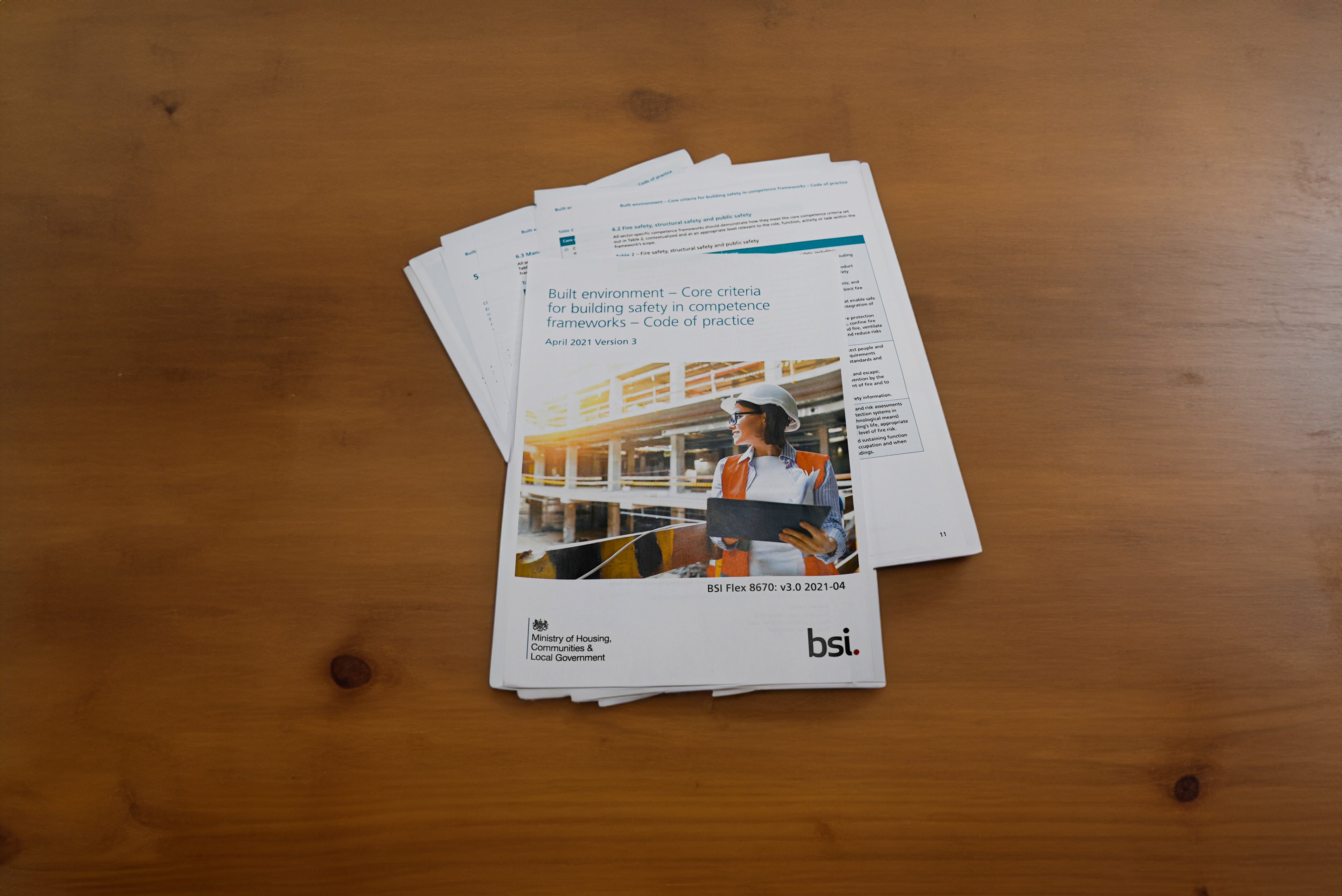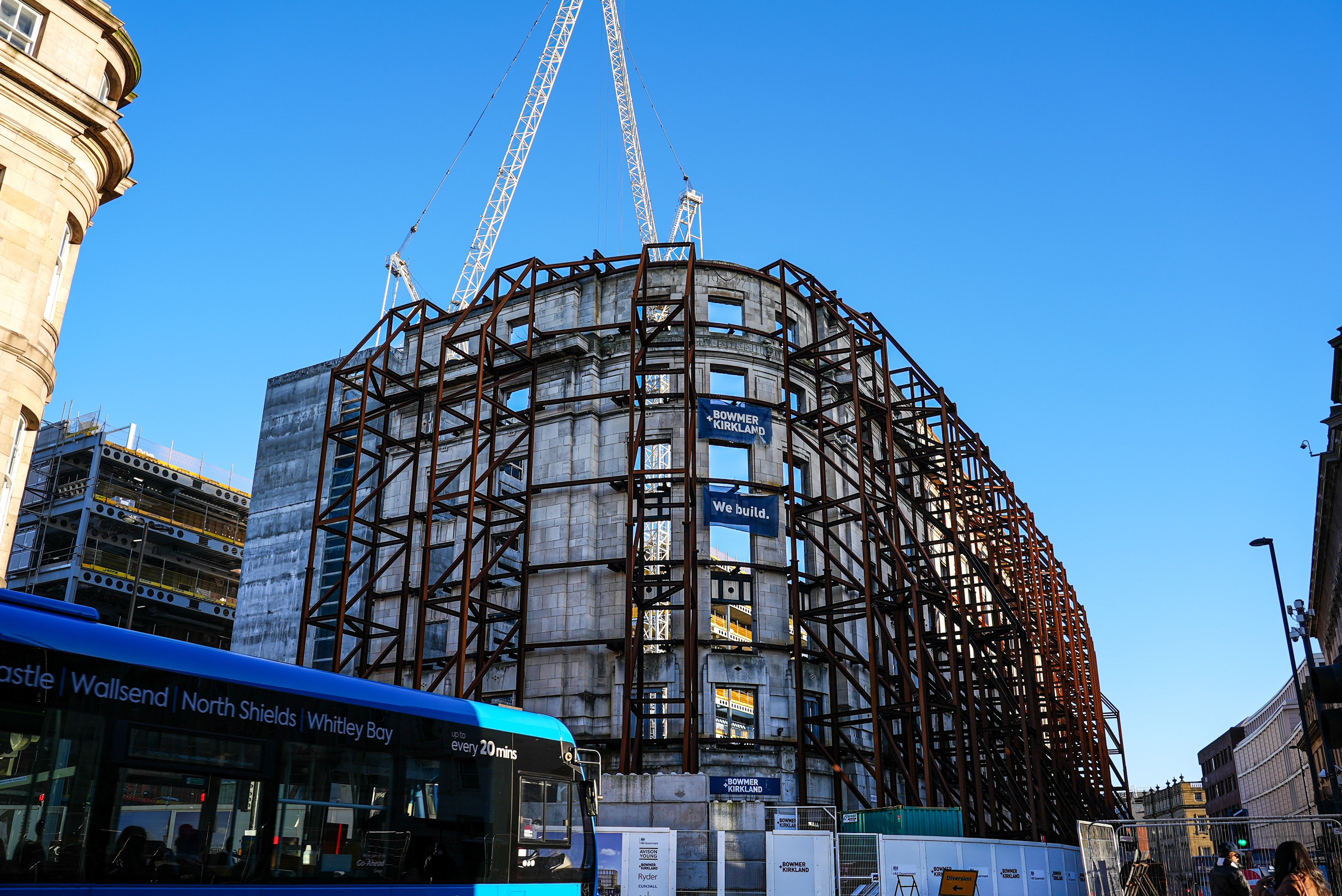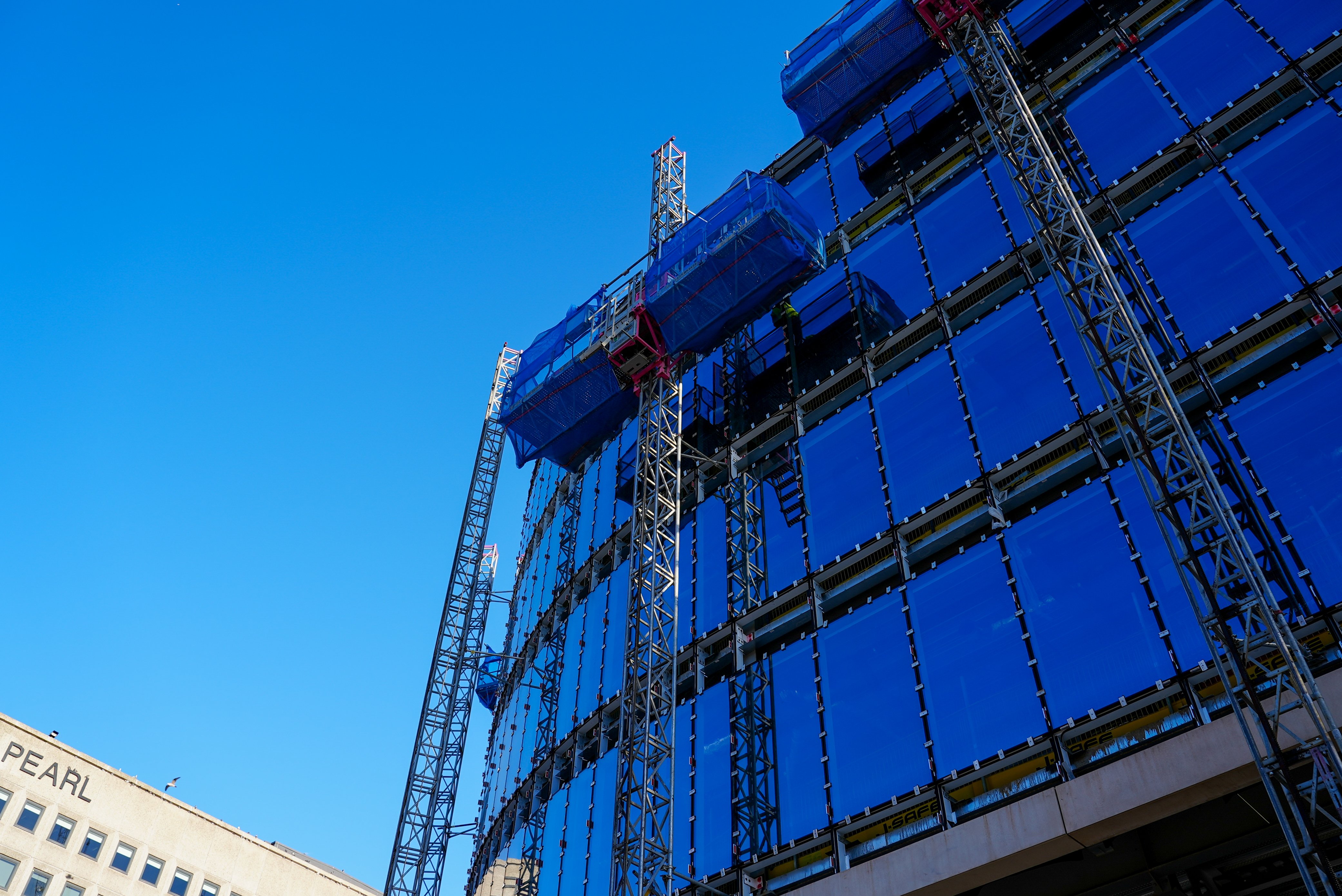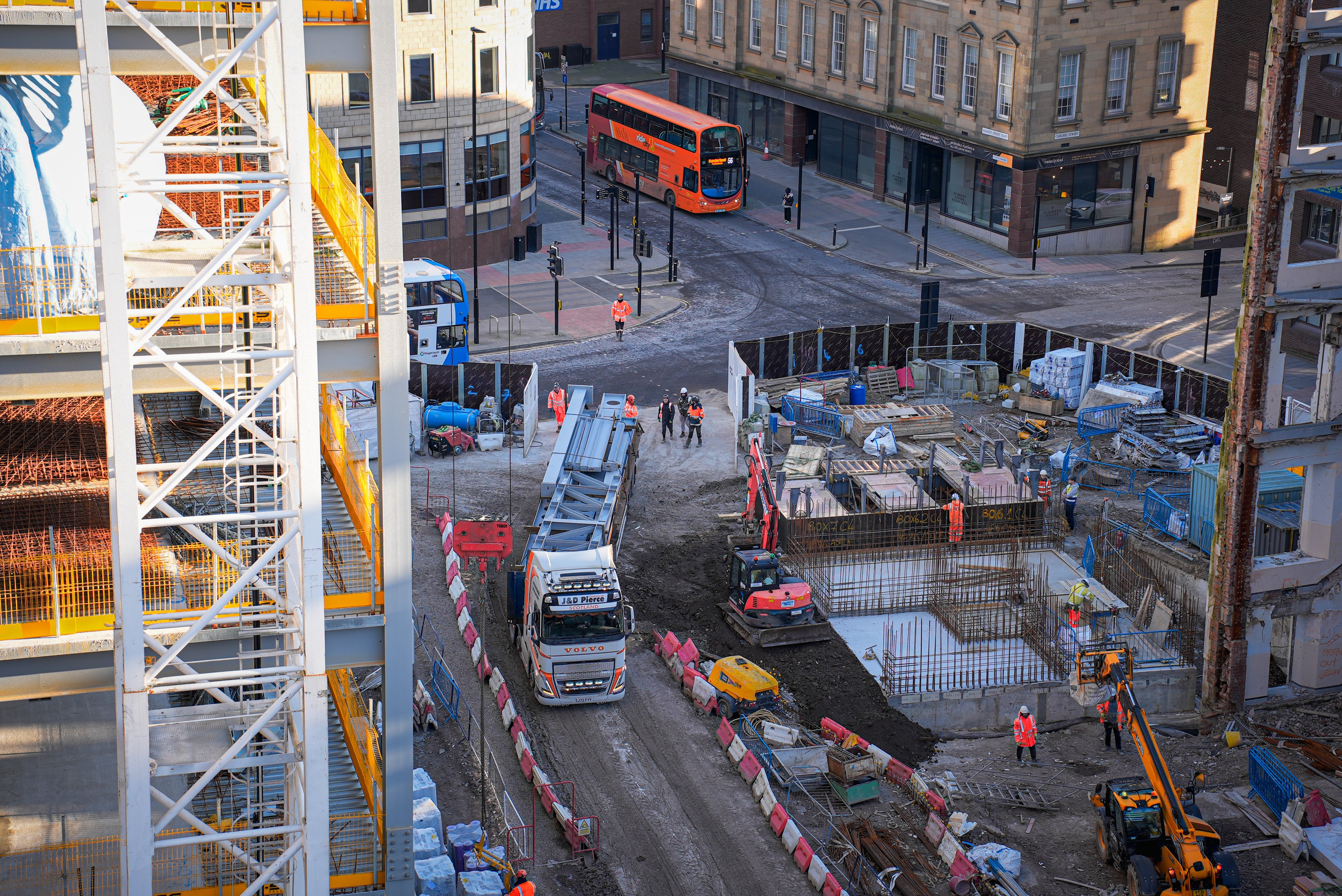The main goal of structural safety regulations is to prevent structural failures that could endanger the lives of people both inside and near a building. This concern also extends to the structural design considerations for temporary loads, temporary conditions, and temporary construction work, especially when such work is being carried out in occupied buildings. While catastrophic structural failures are uncommon, they can have severe consequences, including the loss of multiple lives.
Structural failure in any form can pose a safety risk to individuals within and around a building. This encompasses scenarios like localised collapses, instability, the potential for parts of a building to fall internally (like ceilings) and externally (such as copings or components of cladding systems), and the failure of secondary structural elements like guardrails or balustrades, which can expose people to the risk of falling. Serviceability failures, such as excessive deflection, can also threaten life safety. For example, when a flat roof deflects excessively, it can lead to the accumulation of water on its surface, causing overloading and roof failure.
- Characteristics of a High-Risk Building
- Key Risks Associated with Structural Safety
- Minimising Risks Associated with Structural Safety
- Design and Specification for Structural Safety
- Construction for Structural Safety
- Building Systems and Product Safety
- Conclusion
According to BSI Flex 8670, when it comes to the "structure" of a building, what exactly are we referring to?
- a) foundations – the elements of structure which transfer load from the superstructure to the ground.
- b) superstructure or primary structure – the frame, load-bearing system or other fundamental supports of the building.
- c) structural elements and fixings connecting load-bearing elements together e.g. fixing for cladding systems, windows, guarding and balustrades.
Characteristics of a High-Risk Building
A building is considered high-risk based on a combination of factors that increase the potential dangers and hazards associated with it. Some key factors that can make a building high-risk include:
- Height and Size: Taller or larger buildings inherently pose more risks due to the complexity of their construction, evacuation challenges, and the potential for greater structural failures.
- Occupancy and Use: Certain types of buildings have higher inherent risks due to the nature of their occupancy and use. For example, residential buildings with a large population, healthcare facilities, schools, and places of assembly like stadiums and theatres can be high-risk because they house many people.
Buildings housing vulnerable populations, such as the elderly, children, or individuals with disabilities, may be considered high-risk due to the unique needs and challenges associated with evacuating these groups in an emergency.
- Location: The geographical location of a building can increase its risk profile. Buildings located in areas prone to natural disasters such as earthquakes, hurricanes, floods, or wildfires may be considered high-risk due to the elevated potential for damage or destruction.
- Environmental Exposure: Buildings that are exposed to extreme environmental conditions, such as high winds, heavy snow loads, or corrosive saltwater, can be high-risk because these conditions can weaken the structure over time.
- Historical Significance: Older buildings with historical value may be considered high-risk due to their age and potential structural deterioration, which can increase the risk of accidents or collapses.
- Construction Materials and Technologies: The choice of construction materials and methods can affect a building's risk profile. For example, buildings constructed with substandard materials or techniques may be more susceptible to structural failures.
- Maintenance and Inspections: A lack of regular maintenance and inspections can make a building high-risk, as it may lead to undetected structural issues or safety hazards.
It's important to note that the specific criteria for categorising a building as high-risk can vary depending on local building codes, regulations, and safety standards. Buildings are typically evaluated based on a combination of these factors, and measures are often put in place to mitigate the risks associated with them.

Key Risks Associated with Structural Safety
Structural failures are extensively documented, particularly when they pose risks to human life, cause actual harm, or result in the loss of life. These failures undergo thorough evaluation and review processes. It is widely recognised that the primary causes of structural failure fall into six main categories:
- a) Inadequate Structural Integrity: This occurs when a structure lacks the required robustness and stability to withstand the applied loads. Such deficiencies may arise from design flaws, manufacturing errors, or a combination of both.
- b) Construction Quality Issues: Structural failures can also stem from poor construction quality, which includes failure to adhere to the specified design requirements, improper use of materials, or substandard workmanship and supervision.
- c) Defective Materials: Another source of failure is the use of defective materials. This can be exemplified by situations where manufacturing defects or damage during transport adversely affect the structural performance of the materials.
- d) Substitution of Inferior Materials: Sometimes, substandard materials are substituted during the procurement or construction phase, leading to structural vulnerabilities.
- e) Lack of Resilience in Design: Failures can result from not fully considering unlikely but possible real-world problems during the structural design phase. This oversight can lead to a lack of resilience when structures face unforeseen conditions, such as vehicle impacts, flooding, or explosions.
- f) Fatigue and Corrosion: Structural failure can also occur due to fatigue or corrosion. This encompasses situations where structures are subjected to excessive stress caused by movement and exposure to conditions like water penetration, leading to decay.
In summary, structural failures are extensively documented, and they typically result from issues related to structural integrity, construction quality, materials, design resilience, and the effects of fatigue and corrosion. Identifying and addressing these root causes are crucial for ensuring the safety and longevity of structures.

Minimising Risks Associated with Structural Safety
To enhance building safety, it is crucial to minimise risks through the reinforcement of structural integrity in new construction or during building alterations. This involves comprehensive design, inspections, and ongoing maintenance to acknowledge and mitigate the potential structural failures outlined in the section above. Furthermore, in cases where such failures do occur, it is imperative to grasp the likely performance of the building, enabling measures to be taken to reduce subsequent risks.
For instance, consider the following scenarios:
- a) Understanding the duration for which a building's structure will remain stable in the event of a fire, which may necessitate expert input from fire engineers, allows fire and rescue services to assess the safety of residents or firefighters inside the building. This knowledge assists in making informed decisions regarding evacuation or containment.
- b) In situations where the building's structure has been compromised, such as a car collision with a structural column in a parking facility, the building manager should be equipped with the knowledge to arrange for specialised assessments to determine the extent of damage.
The design, manufacturing, erection, and assembly of structural systems, along with the inspections and independent scrutiny of construction activities, demand a high level of expertise, often in highly specialised fields. Given the multitude of risks associated with structural failures, these tasks should only be entrusted to individuals whose competence has been rigorously validated.
Nevertheless, there are numerous other roles in the design, construction, and management of buildings that can influence structural safety during their operational lifespan, including the actions of residents and users. It is crucial for individuals in these non-structural roles to have a shared understanding of how their responsibilities contribute to the assurance and preservation of structural safety.
Furthermore, it is vital for individuals to recognise how structural aspects, such as design, fabrication, installation, or maintenance, intersect with other facets of building safety, including fire safety. Unauthorized modifications to a building, whether during construction or while in use, can introduce severe risks. Therefore, all modifications must undergo review and approval by appropriately competent individuals to ensure the safety and integrity of the structure.

Core Competence Criteria for Structural Safety
To ensure structural safety, it is essential to consider various aspects of competence. These considerations encompass the following:
- a) Proficiency in recognising various structural systems: Individuals involved in the maintenance of structures must possess the ability to identify and distinguish different structural systems.
- b) Understanding the fundamental characteristics of different structural systems in relation to their performance under specific conditions, such as fire, water penetration, and decay. This awareness is crucial for assessing how these systems may respond to these factors.
- c) Recognising the interaction between one's own role and its potential impact on structural safety. It's essential for individuals to be aware of how their actions or decisions can influence the overall safety of a structure.
- d) Being aware of potential events or situations that can jeopardise structural safety and knowing how to respond effectively to these events. This includes having a proactive approach to identifying and mitigating potential risks.
- e) Understanding when and how to engage and procure expert advice or assessments from competent professionals to maintain structural safety. This involves recognising the need for external expertise and knowing how to seek and utilise it appropriately.
In summary, consideration should be given to these five critical aspects of competence to ensure the ongoing safety and integrity of structural systems.
Design and Specification for Structural Safety
Building regulations typically mandate that buildings must adhere to current design codes, or the codes relevant at the time of construction. These design codes encompass various safety measures to ensure sufficient redundancy in the building's design, allowing it to withstand likely events. However, this requirement is contingent on the involvement of competent professionals in the design and construction processes, with the construction following the specified design.
Compliance with regulations and accompanying statutory guidelines generally establish the minimum criteria for ensuring structural safety.
Structural design regulations have progressively incorporated provisions to mitigate the risk of major structural failure, specifically in the form of progressive or disproportionate collapse. This means that if one part of a building's structure fails, it should not trigger a chain reaction leading to the collapse of other parts.
For this reason, structural design is an aspect of the overall building system and must be coordinated with:
- a) Fire safety strategies to maintain structural integrity during fires, enabling safe evacuation and supporting emergency operations.
- b) Strategies to safeguard structural elements (e.g., encasement and compartmentation) to achieve the goals mentioned above.
- c) Measures to prevent corrosion or decay, including assessing designs for interstitial condensation within the structural layer.
- d) Service layouts to prevent buildability issues that might reduce safety margins, particularly when structural elements are penetrated to address coordination challenges.
While it is crucial to ensure the proper design of major structural elements, several instances of structural failures affecting life safety have been linked to secondary structural components and even fasteners for other building system elements. This encompasses:
- a) Inadequate design and specification of fasteners leading to structural elements or building materials falling from heights.
- b) Incorrect use of glazing in glazed balustrade systems.
- c) Failure to design fasteners properly for rendered and rainscreen cladding systems, taking into account height and anticipated wind loads.
Design Competence for Structural Safety
Achieving structural safety relies on the competence of the engineers involved in designing and fabricating the structure. Structural design has become increasingly intricate, often utilising advanced analytical techniques to enhance structural efficiency.
Many aspects of detailed structural design are delegated to specialist subcontractors, including tasks like foundation and structural frame connections, temporary work design, facade engineering, and the design of safety-critical fixtures such as guardrails and cladding systems. Ensuring clear responsibilities and communication within the supply chain, along with confirming the competence of subcontractors for design work, is essential. Appointing an independent lead or checking engineer with oversight of engineering work can enhance building safety.
Considering the level and type of competence required for structural design involves:
- a) Understanding the boundaries of one's competence in performing structural design tasks related to safety.
- b) Identifying situations where specialised advice is necessary.
- c) Recognising intersections between structural design and other disciplines relevant to building safety, such as fire safety or condensation risk management.
- d) Procuring and overseeing the competence of individuals appointed to carry out structural design work.

Construction for Structural Safety
Ensuring the construction phase of a project, whether it involves new construction, extensions, or maintenance, is crucial to delivering structural solutions that align with the original structural design. Since various aspects of the design are handled by specialised subcontractors during construction, it is imperative to:
- a) Ensure that contracting organisations have the capability to assess and oversee the competence of subcontractors responsible for design tasks. Establish clear communication channels delineating responsibilities.
- b) Verify that contracting organisations possess the competence to ensure that any modifications made to the structural design are appropriately referred back to a qualified structural designer. Assess the implications of these changes on both structural and fire safety. For instance, if an extra floor is added to the design, the roofing steelwork will need to become flooring steelwork and may require additional fire protection.
- c) Design temporary works with the involvement of competent individuals and effectively manage them to maintain structural integrity throughout the construction phase.
Criteria for Competence in Construction
Managing the quality of fabrication, installation, and construction work is also of utmost importance. Contracting organisations and their personnel should demonstrate competence by:
- a) Reviewing and coordinating structural design information developed during the construction phase.
- b) Evaluating proposals for on-site supervision.
- c) Ensuring the quality and suitability of materials used on-site, taking care to avoid substitutions, to meet structural safety requirements.
- d) Establishing, scheduling, and overseeing site inspections at critical phases, such as checking reinforcement compliance before pouring concrete.
- e) Conducting appropriate quality testing when necessary, such as testing weld strengths or concrete strength to meet specified standards.
- f) Managing any deviations in structural design or installation by referring changes back to the structural designers to avoid compromising structural safety.
- g) Implementing independent scrutiny of the construction process, either by the structural designers themselves or a suitably experienced independent clerk of works. This helps reduce the risk of construction errors and ensures competent execution of the work.
- h) Maintaining accurate records, including photographs during construction. These records will later be passed on to building operators for management purposes.

Building Systems and Product Safety
To ensure comprehensive building safety, it is essential to coordinate various aspects of building design, management, and construction. This involves:
- Carefully selecting construction materials and building systems that are suitable for their intended purpose. These choices should ensure that both individual components and the overall system contribute to maintaining building safety. Consideration should be given to viewing buildings as interconnected systems.
- Recognising the significance of installation quality in the performance of construction products and building systems. Implementing quality assurance and management processes is necessary to guarantee that installation meets the required standards.
- Establishing requirements for the durability of construction products over time, taking into account the building's intended use and the potential wear and tear it may endure.
- Evaluating the impact of location and contextual factors on the performance and selection of construction products. This includes factors such as proximity to boundaries, compliance with fire resistance and water resistance standards, size, distance, environmental conditions, and geometry.
To further enhance building safety throughout its entire lifecycle, it is crucial to:
- Utilise information from testing, assessment, and maintenance procedures for construction products and building systems. This information should include certifications, classifications, and industry-approved standards. It should inform decisions related to design, specifications, construction, installation, and ongoing management.
- Establish and follow maintenance requirements for construction products and building systems over the building's lifecycle. This involves planning, procuring, monitoring, and managing maintenance activities related to building fabric, fire protection, and life safety systems.
- Plan for the replacement and safe disposal of construction products and building systems at the end of their lifecycle to ensure continued building safety.
- Promptly notify building operators, suppliers, and manufacturers if defects or malfunctions are detected in construction products or building systems that could compromise building safety. This ensures that appropriate actions can be taken to address any issues and maintain the safety of the building.

Conclusion
In conclusion, the construction phase is a critical stage for ensuring structural safety and integrity. To achieve this, contracting organisations must prioritise competence, clear communication, and quality management throughout the construction process. This commitment to competence and attention to detail are essential to deliver structural solutions that align with the original design, promoting safety and reliability in construction projects.

